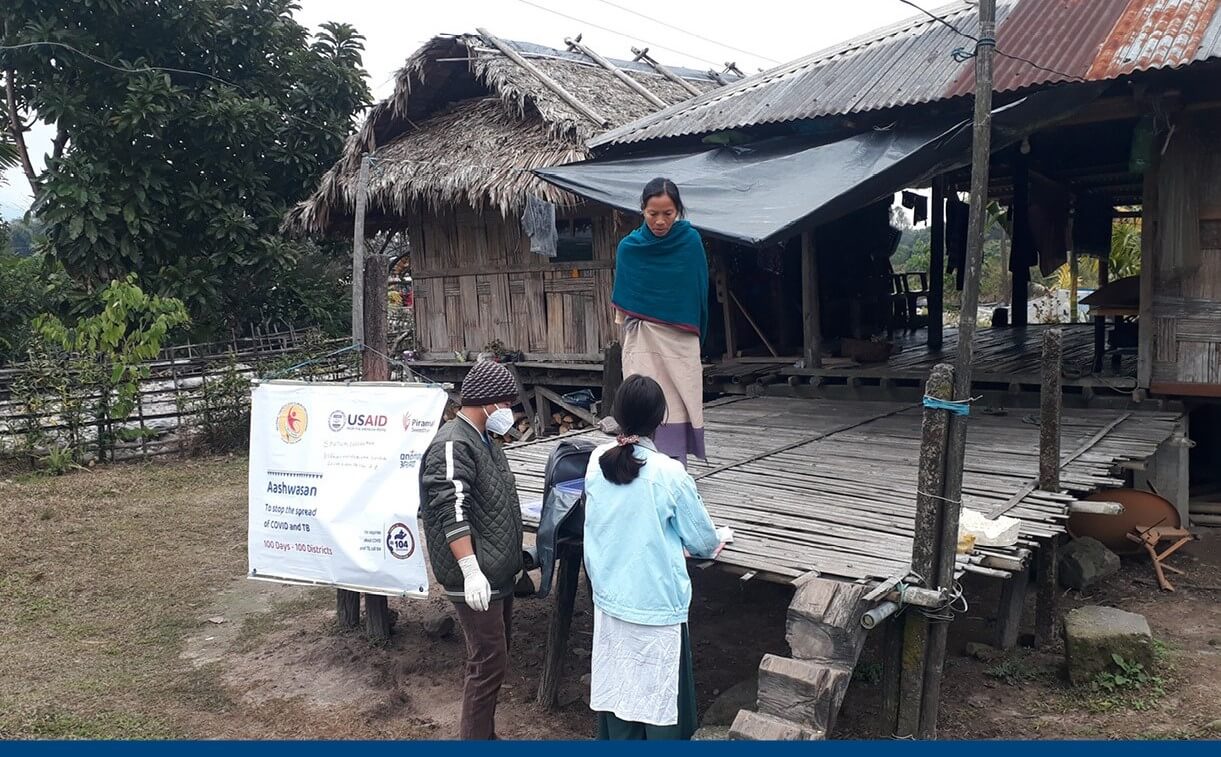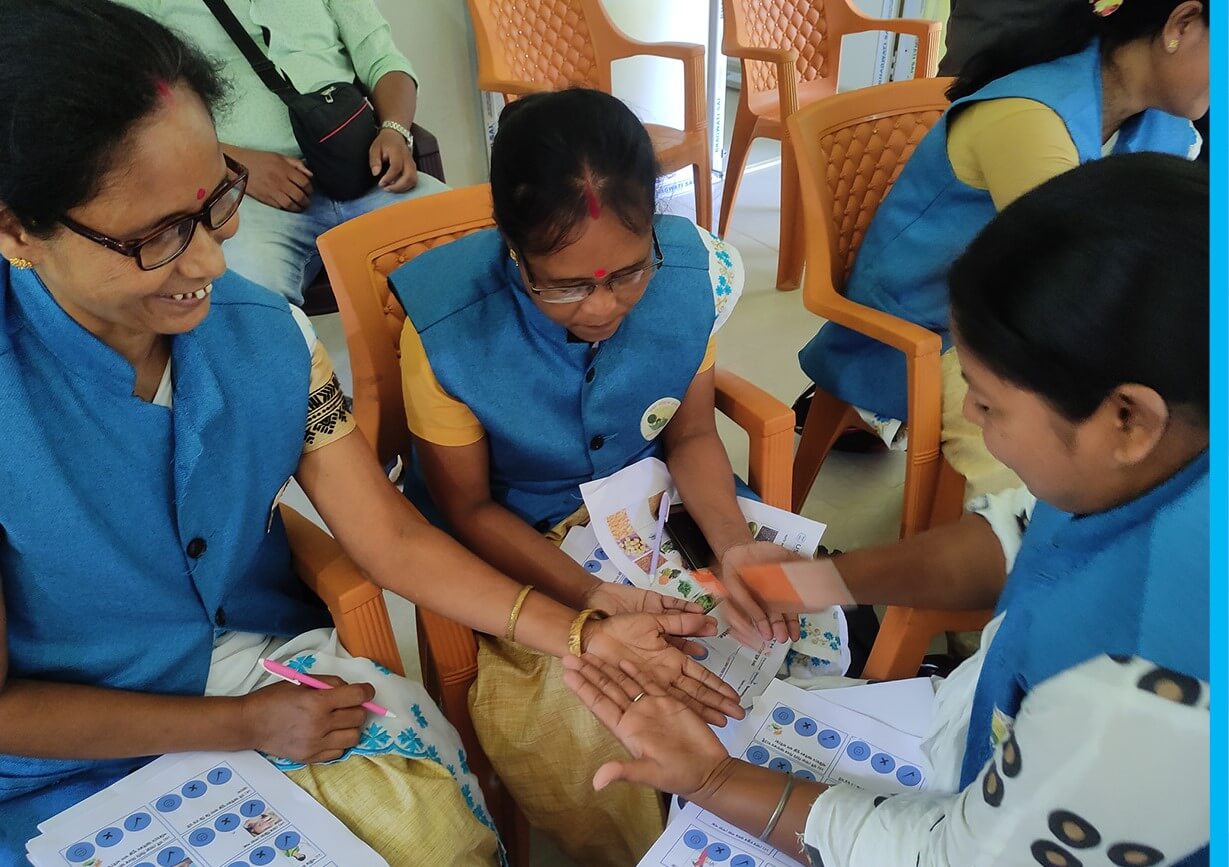Piramal Swasthya
Solving Health Problems in India’s Tribal Communities
Above photo: Piramal Swasthya
Of all the problems the Indian public health nonprofit Piramal Swasthya could address, tuberculosis (TB) is the one Dr. Shailendra Hegde, Head of Public Health Innovations at Piramal Swasthya, the health arm of the Piramal Foundation, did not want to take on. “I always told my team TB is one of those diseases where we should not go in because it is a humongous problem in India, and once we go in, there is no looking back,” says Hegde. “It seemed very, very difficult to address, especially with our team size.”
However, in 2019, when Piramal Swasthya worked with Bridgespan to assess the healthcare needs of tribal populations, TB emerged as a problem that couldn’t be ignored. Extensive fieldwork and research revealed that health outcomes for tribal people lag behind Indian national averages on many measures, including child and maternal mortality. TB was an enormous health challenge: tribal communities have five times the incidence of TB as other Indians—a disease the Government of India has committed to eliminating from its population by 2025.
Hegde had no choice but to go headlong into that space for the improved health of tribal communities. “We couldn’t actually keep ourselves out of the TB sector, because, honestly, that was the need,” says Hegde.
The need was massive. Tribal peoples in India number 105 million, or 8.6 percent of India’s population. Of those, 90 percent live in rural areas, and half live below the poverty line.
Bridgespan and Piramal Swasthya realized fairly quickly that to have a real and scaled impact on the health challenges facing tribal groups across India, they would need to collaborate with other like-minded organizations. “It’s not possible for a single organization like the Piramal Foundation to really work at that scale alone,” says Ashwin Deshmukh, head of operations and advisory at Piramal Swasthya. Together, Bridgespan and Swasthya defined a strategy and operating model that involved bringing together government, civil society, philanthropy, and tribal communities to form a tribal health collaborative.
 Anamaya partnered with the Indian government and USAID to conduct door-to-door TB screening in 68,413 villages across 174 rural tribal districts. The effort uncovered 10,249 people with TB, who could then be treated and cured.
Anamaya partnered with the Indian government and USAID to conduct door-to-door TB screening in 68,413 villages across 174 rural tribal districts. The effort uncovered 10,249 people with TB, who could then be treated and cured.
Photo: Piramal Swasthya
A quantum change for India
“There are many organizations that focus on tribal communities, but those are very small-scale interventions,” says Bridgespan Principal Shashank Rastogi. “They may have one hospital, or they may be operating in a few of the 150-odd tribal districts. The scale of operations that Piramal Swasthya was visualizing was a quantum change compared to what was already happening in India.”
Bridgespan identified the collaborative needed for facilitating health delivery, strengthening health systems, tribal health research, funding programs, and more. It then connected Swasthya with many of those partners. “Bridgespan has a great capability to bring together like-minded organizations,” says Deshmukh.
The result was Anamaya, a tribal health collaborative that brought together Piramal Swasthya, the Piramal Foundation, the Bill and Melinda Gates Foundation, USAID, government agencies, NGOs, and other partners to effectively reach a very large, scattered, and high-need tribal population for improved health services.
Chief among those partners was the Indian government. Hegde explains: “Government support gives us, one, scale—our ability to scale increases significantly with government support; and, two, a belief that what we are going to do is also, over a period of time, sustainable.” Engaging with the Indian Ministry of Tribal Affairs, Ministry of Health and Family Welfare, and Ministry of Women and Child Development from the beginning made it easier for everyone to align—and ensured the work would be prioritized in the government’s agenda and budgets going forward.
The most important partners: Tribal communities
 With TB treatment well underway, Piramal Swasthya is turning its attention to non-communicable illnesses, such as anemia.
With TB treatment well underway, Piramal Swasthya is turning its attention to non-communicable illnesses, such as anemia.
Photo: Piramal Swasthya
The Anamaya/Bridgespan team considered the communities they served as not just beneficiaries of their efforts but key drivers of and partners in creating change. To this end, they worked to infuse modern medicine with local knowledge—a practice that would improve compliance. “To tackle malnutrition in tribal communities using locally grown and locally prepared nutritious products enables a much higher adoption rate. Anamaya works with tribal peoples on kitchen gardens, local nutrition centers, and awareness building and knowledge towards promoting local solutions with the required levels of micronutrients,” says Bridgespan Partner and Co-head, Asia and Africa, Pritha Venkatachalam, who led this work.
Beyond adoption rates, Anamaya wanted to harness the local knowledge of the tribal communities—to learn from them and elevate their voices. When Anamaya hired 2,500 people to carry out the TB outreach, over 50 percent of those health workers came from tribal communities with whom they worked. They also engaged with 100,000 community influencers to encourage greater community participation.
Traversing non-motorable roads
With their team established, Anamaya and USAID worked with Indian health ministries to conduct Aashwasan, a door-to-door screening program (called “active case finding”) to detect people with TB disease in 68,413 villages across 174 tribal districts. Through a multitiered screening process of more than 10 million people, the effort uncovered 10,249 “missing” people with TB, who could now be treated and cured.
If it sounds exhausting, that’s because it is. Many of the communities can only be accessed by non-motorable roads. Rastogi recalls a field visit to a tribal village. “We walked 16 kilometers, over hilly terrain, on a hot day,” says Rastogi. “That was something the health workers were doing day in and day out.”
The results to date are just the beginning. “The TB screening protocol that we developed and the process that we followed has been endorsed by the Government of India,” says Hegde. The Indian ministries have identified 75 more tribal districts for heightening community awareness around TB and enhancing testing and diagnosis.
Limitless potential
“We are hoping to see the curb-cut effect that, when primary healthcare solutions are provided for tribal communities, then some of the pervasive health-systems issues for other rural and remote populations in India, and indeed, across the Global South, can also be addressed. For example, how do you provide access to better health facilities, health equipment, and qualified health workers in the most distant tribal areas?”—Bridgespan Partner and Co-head, Asia and Africa, Pritha Venkatachalam
Anamaya is thinking even bigger, tackling a range of primary health issues in tribal communities with the help of the staff and network it has established. In a pilot study conducted for over seven years in the Araku Valley in the district of Visakhapatnam, it has managed to get maternal deaths down to zero among women registered with the program.
“The TB campaign gave us an opportunity to reach out to almost all tribal populations,” says Deshmukh. “Today, we have that connection after working almost for a year with leaders in the community.”
Partners in passion
Hegde is looking three to five years down the road to support more holistic development for tribal communities. “How do we really improve other determinants of health?” he asks. “The problems for a tribal community also include forest and land rights, education, water, livelihoods, and so on. So, how do we bring partners who can focus on that?”
Hegde and his team are relentless in their focus. “When we would travel together to tribal locations, we would discuss the tribal health challenges … the conversation would never veer away from the issue at hand and what we needed to do,” says Rastogi.
Anamaya felt the same positive, passionate energy coming from its Bridgespan teammates. When Deshmukh speaks of working with Bridgespan, he talks about “sparring partners” and “the arguments” they had during their brainstorming sessions. But his words are laced with affection for people he considers not consulting partners so much as co-owners of the project. “The team was one,” says Deshmukh. “I think that’s the biggest positive of our working with Bridgespan.”
